Kukkapelton Päiväkoti
|
 |
We arrive in the school, which is located in the heart of Hatanpään’s
neighbourhood, in northeast Tampere. We find ourselves in the garden and we observe the bower, that allows
them to leave when it rains or snows. |
|
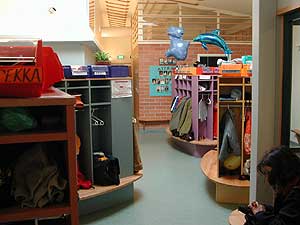 |
As in other schools, in the entrance we find this furniture where the
belongings of each boy or girl are kept. They have even thought about
the adults that are going to visit them, and they had reserved some space
in the shelves for us. |
|
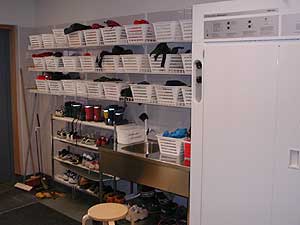 |
Next to the doors which lead to the garden we find a new way to classify
and keep the diverse footwear and clothes that allow children to go outside
and to adapt to the bad weather. |
|
 |
One of the different spaces in which we can see children of different
ages and adults, first thing in the morning. |
|
 |
Another group of older children is celebrating Carnival, which in Finland
takes place on the first of May. They have brought their disguise from
home and we see them as they get ready. We enjoy listening to their song. |
|
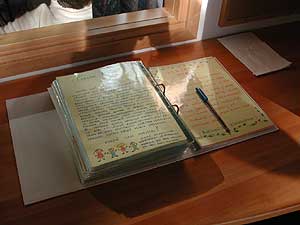 |
Although this school functions since a year ago, we already find a systematic
collection of documentation that allows us to find out about the work
that they are doing. |
|
 |
The spaces’ funcionality. Walls with cabinets where the beds hide. |
|
 |
From a mezzanine we see the space of the entrance. Some lamps catch our
attention, because they create a homely environment. |
|
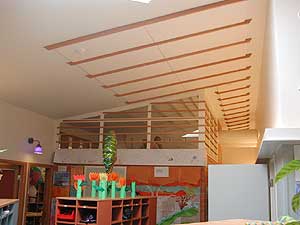 |
Since the opposite side of the place where the previous photo was taken,
we see a view of the mezzanine. It is a very welcoming corner for the
children, where they can have some intimacy and contemplate things with
another perspective. |
|
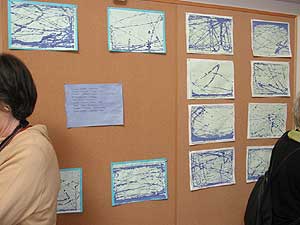 |
In the walls we can find paintings and other artistic expressions. These paintings were done using a technique which consists on letting
some marbles, wet with painting, roll upon the paper. |
|
 |
This furniture allows the exhibition of materials. Here we see treasures that they have found in the beach or the forest.
They measure and classify them, their size, weight, texture,... |
|
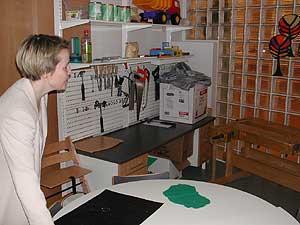 |
Sari Mantyla shows us the carpenter's bank and tools, as well as the
chairs for the smallest children. |
|
 |
The kitchen. They have another organization system for the food schedules.
The trolleys are always ready to be adapted to the diversity of schedules
of the groups. |
|
 |
A teacher disguised as a clown is already prepares one of the meals. It is interesting to observe this space for the children’s play,
with an authentic kitchen with all its instruments: plates, spoons, pots,
etc. built to their height. Who would say that this is a space to play? |
|
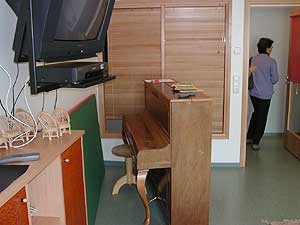 |
One of the multi-use spaces dedicated to music and audiovisuals. |
|
 |
As in the other schools, there's a working room with technological equipment
which can be shared with the children. |
|
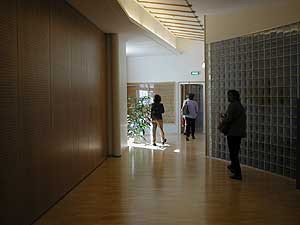 |
As a comment in the chronicle says, this space communicates the school
with other services in the building. |
|
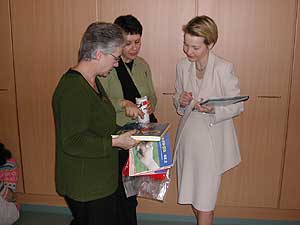 |
We thank Sari Mantyla, representative of the teachers’ team, for
her attention, and we offer her some reminders of our visit. |
Travel to Finland with Teachers’ Association Rosa
Sensat, INFANCIA magazine. April/may 2002
© www.elsafareig.org